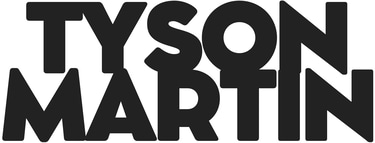From Gatekeeper to Growth Enabler: Reframing the CISO Role in 2025
For years, the Chief Information Security Officer (CISO) was seen primarily as a risk mitigator, the guardian of firewalls, encryption, and compliance checklists. But in 2025, that definition is evolving rapidly. Today’s CISO is stepping out of the server room and into the boardroom—partnering with executives, enabling innovation, and driving measurable business growth.


From Gatekeeper to Growth Enabler: Reframing the CISO Role in 2025
For years, the Chief Information Security Officer (CISO) was seen primarily as a risk mitigator, the guardian of firewalls, encryption, and compliance checklists. But in 2025, that definition is evolving rapidly. Today’s CISO must comfortably have a presence in the server room and in the boardroom, partnering with executives, enabling innovation, and driving measurable business growth.
This shift isn’t just semantic; it’s strategic. As organizations undergo digital transformation, move to the cloud, adopt artificial intelligence, and operate in increasingly complex regulatory environments, security can no longer be a reactive function. Instead, it must become proactive, predictive, and most importantly, aligned with the organization’s growth objectives.
The New Mandate for CISOs
Recent research, including Evanta’s 2025 CISO Leadership Perspectives survey, highlights a notable shift: security leaders are now being evaluated not just on risk reduction, but on their ability to enable new revenue-generating initiatives. This includes securing digital customer experiences, streamlining product development cycles, and ensuring compliance as a competitive differentiator.
Forward-thinking CISOs are embracing this change by speaking the language of business, aligning security investments with enterprise KPIs, and building cross-functional alliances. They understand that security doesn’t operate in a vacuum. Whether it’s enabling faster go-to-market strategies or safeguarding brand reputation, security is intricately woven into the fabric of business performance.
Building Trust as a Strategic Asset
One of the CISO’s most powerful tools in this new era is trust. Trust in how data is handled. Trust in the reliability of services. Trust in the ethical use of technology. By instilling security into every layer of the organization’s digital ecosystem, CISOs help build customer confidence and stakeholder credibility.
A tangible example can be seen in industries like fintech and healthcare, where digital trust directly influences user adoption and retention. Companies that proactively showcase their security posture—through transparency reports, certifications, or privacy-first design—often outpace their peers in customer loyalty.
Metrics That Matter to the Business
To solidify their role as business enablers, CISOs must embrace metrics that resonate beyond IT. Traditional indicators like number of vulnerabilities patched or phishing attempts blocked are important, but insufficient on their own.
Instead, successful CISOs tie their metrics to business outcomes: reduction in downtime, acceleration of product releases due to early security involvement, savings from automation of compliance reporting, or increased win rates in sales due to third-party assurance. These are the stories that win over the C-suite and boardroom.
Case in Point: A CISO’s Influence on Product Development
Consider a mid-market software company that struggled with lengthy development cycles due to late-stage security reviews. Their newly hired CISO implemented a DevSecOps program, embedding security controls directly into the CI/CD pipeline and training developers on secure coding practices.
Within six months, deployment cycles shrank by 40%, and critical vulnerabilities dropped by 70%. Even more impressively, the security team was credited with accelerating time-to-revenue on two major product launches. The CISO wasn’t just protecting value; they were creating it.
Cultivating the Right Culture
Transformation at this level requires more than tools and tactics—it demands cultural change. CISOs must cultivate a mindset across the organization that sees security as everyone’s responsibility and an integral part of the innovation process.
That often means overhauling training programs, rethinking access controls, and building ambassador networks within departments. It also requires leading with empathy, transparency, and a clear vision that security is not the department of “no,” but the team of “how.”
Communicating with the Board
CISOs today are spending more time in front of boards and executive committees than ever before. But success in these forums requires a pivot from technical briefings to strategic storytelling.
Effective board communication focuses on material risks, business context, and comparative performance. Instead of listing vulnerabilities, the conversation centers on how security investments reduce exposure, support digital trust, and improve enterprise resilience. The goal is not to inform, but to influence.
Looking Ahead: The 2025 CISO Blueprint
The trajectory is clear: CISOs who can combine technical depth with business acumen will be the ones who thrive. This means investing in soft skills, financial literacy, and stakeholder management, alongside core cybersecurity competencies.
It also means reimagining the security function itself—less as a siloed department and more as a strategic partner embedded in product, marketing, HR, and beyond. The most effective CISOs will be those who empower others to act securely, not those who attempt to control every variable.
Final Thoughts
As we move through 2025 and beyond, the organizations that will lead in their sectors are those where security is not an obstacle but an accelerant. The CISO of the future is not a gatekeeper—they’re a growth enabler, a trust architect, and a transformational leader.
It’s time to step into that role.
To learn more about how security leadership is evolving, or to connect with a trusted voice in cybersecurity strategy, visit tysonmartin.com.
